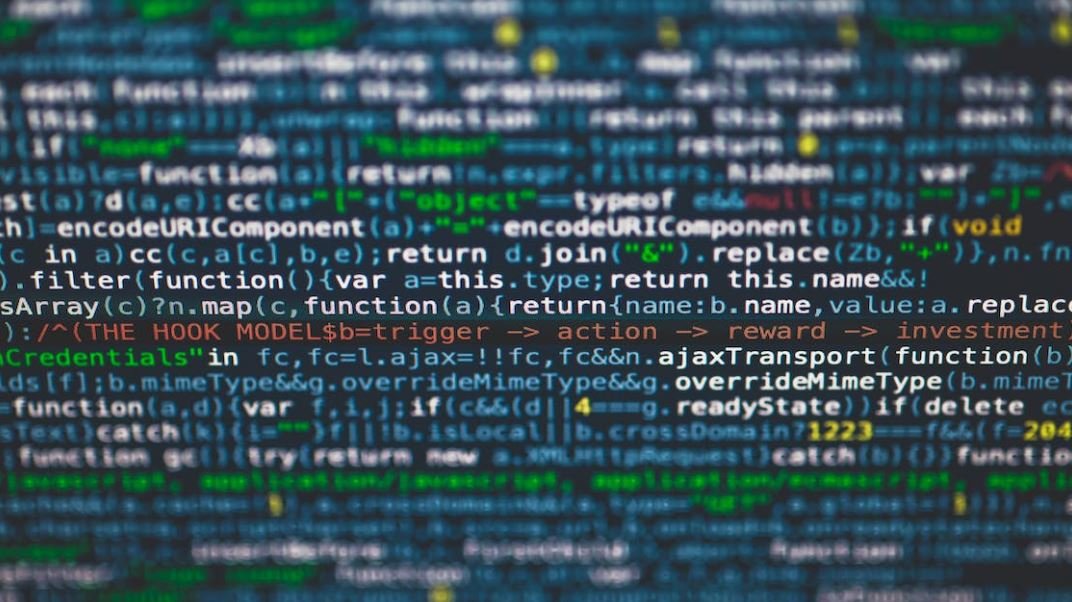Can AI Reason?
Artificial Intelligence (AI) has become increasingly advanced, but can it actually reason? Reasoning is the ability to draw logical conclusions based on evidence and knowledge. While AI systems can perform complex tasks and make predictions, the concept of reasoning goes beyond mere pattern recognition and decision-making. In this article, we explore the question of whether AI is capable of true reasoning.
Key Takeaways:
- AI systems can perform complex tasks and make predictions, but their ability to reason is still limited.
- Reasoning involves drawing logical conclusions based on evidence and knowledge.
- AI systems lack the ability to understand context and incorporate prior knowledge effectively.
AI systems primarily rely on statistical modeling and machine learning algorithms to process vast amounts of data and identify patterns. They excel at recognizing and classifying patterns in large datasets, but their reasoning capabilities are still developing. While AI can process enormous amounts of data and provide insights, it struggles to understand context and infer meaning from information.
AI’s reasoning capabilities are limited by its reliance on statistical modeling and lack of contextual understanding.
The Challenges of AI Reasoning
Reasoning involves the ability to integrate prior knowledge with new information and draw logical conclusions. Human reasoning often relies on knowledge from various domains and incorporates context to make inferences. However, AI systems struggle with these essential aspects of reasoning.
AI systems lack the contextual understanding necessary for effective reasoning.
One of the major challenges AI faces is the inability to understand context. AI algorithms process information in isolation without the broader contextual understanding that humans possess. As a result, their reasoning is hindered, and they may draw inaccurate or incomplete conclusions.
AI vs. Human Reasoning
Human reasoning is characterized by the ability to draw upon existing knowledge and apply it to new situations. We can reason through analogies, compare and contrast different concepts, and weigh evidence to make informed decisions. AI, on the other hand, lacks the deeply ingrained knowledge and context that humans possess.
AI cannot emulate the depth of knowledge and contextual understanding that humans exhibit during reasoning.
In a side-by-side comparison, AI systems may outperform humans in specific tasks, such as identifying trends in large datasets. However, when faced with novel situations or complex problems that require abstract thinking and nuanced reasoning, AI falls short.
The Road to Advanced AI Reasoning
Advancements in AI reasoning require improving contextual understanding and incorporating prior knowledge effectively. Researchers are exploring techniques such as knowledge graphs and symbolic reasoning to enhance AI’s ability to reason. By grounding AI systems with foundational knowledge and enabling more sophisticated reasoning techniques, progress can be made towards advanced AI reasoning.
Developing advanced AI reasoning requires integrating domain knowledge and enhancing reasoning techniques.
The Limitations of AI Reasoning
| Limitation | Description |
|---|---|
| Lack of context | AI systems struggle to understand context, hindering their reasoning abilities. |
| Inability to incorporate prior knowledge | Absence of deep ingrained knowledge limits AI’s ability to reason effectively. |
| Difficulty with nuanced reasoning | AI systems find it challenging to perform abstract thinking and handle complex problems that require nuanced reasoning. |
While AI has made remarkable progress in various fields, true reasoning capabilities are still beyond its reach. AI systems lack the profound contextual understanding and the ability to integrate prior knowledge effectively that are inherent to human reasoning. The road to advanced AI reasoning lies in enhancing contextual understanding and incorporating domain knowledge effectively.
AI vs. Human Reasoning Comparison
| Aspect | AI Reasoning | Human Reasoning |
|---|---|---|
| Contextual Understanding | Limited | Extensive |
| Incorporation of Prior Knowledge | Challenging | Efficient |
| Abstract Thinking | Basic | Sophisticated |
While AI can process vast amounts of data and excel in specific tasks, its reasoning abilities fall short compared to human cognitive capabilities. Humans have a deep contextual understanding, can seamlessly incorporate prior knowledge, and engage in abstract thinking. These aspects give humans an edge in complex reasoning tasks.
Techniques for Upgrading AI Reasoning
| Technique | Description |
|---|---|
| Knowledge Graphs | Representing knowledge in graph structures that enable richer contextual understanding. |
| Symbolic Reasoning | Using logic and symbolic representations to handle conceptual relationships and abstract reasoning. |
To advance AI reasoning, researchers are exploring techniques such as knowledge graphs and symbolic reasoning. Knowledge graphs allow AI systems to represent knowledge in a structure that incorporates contextual relationships more effectively. Symbolic reasoning utilizes logic-based approaches to handle conceptual relationships and perform abstract reasoning. By combining these techniques and refining AI algorithms, the path to more advanced AI reasoning can be paved.
While AI has yet to fully attain the reasoning capabilities of humans, ongoing research and development are steadily pushing the boundaries. By addressing the challenges of context understanding and incorporating prior knowledge effectively, and by exploring new techniques like knowledge graphs and symbolic reasoning, AI can continue to improve its ability to reason and make more nuanced and informed decisions.

Common Misconceptions
Paragraph 1: AI Cannot Reason
One common misconception surrounding AI is that it is capable of reasoning like a human. However, AI systems operate based on algorithms and data processing, which makes them different from human intelligence. While AI can perform complex tasks and make decisions based on patterns and data, it lacks the ability to reason and understand abstract concepts in the same way humans do.
- AI operates on algorithms and data processing.
- AI lacks the ability to reason like humans.
- AI can make decisions based on patterns and data.
Paragraph 2: AI Cannot Fully Understand Context
Another misconception is that AI can fully understand the context in which it operates. While AI has advanced natural language processing capabilities, it still struggles with understanding the nuances and complexities of human language. AI often relies on predefined patterns and rules to generate responses, which can lead to misunderstandings when faced with ambiguous or contextual language.
- AI struggles with understanding human language nuances.
- AI relies on predefined patterns and rules.
- Misunderstandings can occur when faced with ambiguous language.
Paragraph 3: AI Cannot Replace Human Creativity
Many people mistakenly believe that AI has the potential to replace human creativity. While AI can generate content and mimic creative outputs to some extent, it lacks the unique imagination, intuition, and emotional aspects that humans possess. AI is designed to optimize and generate solutions based on existing patterns and data, but it cannot replicate the depth and complexity of human creativity.
- AI can generate content and mimic creativity to some extent.
- AI lacks unique imagination, intuition, and emotions.
- AI cannot replicate the depth and complexity of human creativity.
Paragraph 4: AI Cannot Fully Comprehend Ethical and Moral Considerations
AI often encounters challenges when it comes to understanding and comprehending ethical and moral considerations. While AI can be programmed with ethical guidelines, its decision-making is based on predefined rules and patterns, which may not always align with human values and morality. The ability to fully comprehend the complex ethical dilemmas often requires human judgment and contextual understanding.
- AI can be programmed with ethical guidelines.
- AI decision-making is based on predefined rules and patterns.
- Human judgment and contextual understanding are required for complex ethical dilemmas.
Paragraph 5: AI Cannot Replace Human Empathy
One prevalent misconception is that AI can replace human empathy and emotional intelligence. While AI can be designed to recognize and respond to emotions, it lacks the deep emotional understanding and connection that humans possess. AI’s responses are based on predefined rules and algorithms, and it does not experience emotions or empathize with others in the same way humans do.
- AI can recognize and respond to emotions to some extent.
- AI lacks deep emotional understanding and connection.
- AI does not experience emotions or empathize like humans.

Table: AI-based Applications
Artificial intelligence (AI) has revolutionized various fields in recent years. This table provides a glimpse of some interesting applications of AI in different industries.
| Industry | AI-based Application |
|---|---|
| Finance | Automated trading systems |
| Healthcare | AI-powered diagnosis assistants |
| Transportation | Self-driving cars |
| Retail | Personalized shopping recommendations |
Table: Natural Language Processing Advancements
Natural Language Processing (NLP) is a critical aspect of AI that enables computers to understand human language. This table highlights exciting advancements in NLP.
| Advancement | Description |
|---|---|
| Text Summarization | Automatically generates concise summaries of large documents |
| Language Translation | Real-time translation between languages |
| Chatbots | Interactive AI assistants capable of human-like conversation |
| Sentiment Analysis | Analyzing and understanding emotions in text |
Table: AI vs. Human Performance
This table showcases instances where AI technology has outperformed human capabilities, demonstrating its potential.
| Task/Field | AI Advantage |
|---|---|
| Image Recognition | Higher accuracy and efficiency |
| Medical Diagnosis | Enhanced accuracy and reduced error rates |
| Game Playing | Superior strategic decision-making abilities |
| Data Analysis | Rapid processing and pattern recognition |
Table: Impact on Job Market
AI’s integration in the workforce has led to significant changes. This table depicts its impact on the job market.
| Impact | Description |
|---|---|
| Job Automation | Some roles being replaced by AI-powered systems |
| New Job Opportunities | Emerging positions related to AI development and maintenance |
| Workforce Training | The need for reskilling and upskilling employees |
| Job Satisfaction | AI augmenting tasks to improve job quality and efficiency |
Table: AI Ethics Considerations
As AI progresses, ethical considerations become important. This table highlights key AI ethics concerns.
| Ethics Concern | Description |
|---|---|
| Data Privacy | The protection and proper usage of personal data |
| Algorithmic Bias | The potential for AI systems to be biased or discriminatory |
| Job Displacement | The impact of AI on employees and employment stability |
| Accountability | Ensuring responsibility for AI systems’ actions and decisions |
Table: AI and Cybersecurity
AI contributes to both the advancements and challenges in the field of cybersecurity. This table illustrates their relationship.
| Aspect | Impact |
|---|---|
| Threat Detection | AI aids in identifying and preventing cyber threats |
| Cyber Attacks | AI enhances the sophistication and potential scale of attacks |
| Behavioral Analytics | Using AI to detect anomalous user behavior |
| Security Automation | AI-driven tools automate security measures |
Table: AI in Entertainment
AI’s impact extends to the entertainment industry, transforming the way content is created and consumed. This table showcases its influence.
| Domain | AI Application |
|---|---|
| Film and TV | AI-assisted video editing and special effects |
| Music | AI-generated music compositions and remixes |
| Gaming | AI-driven character behavior and game adaptation |
| Virtual Reality | AI-enhanced virtual experiences and simulations |
Table: AI’s Environmental Impact
AI’s potential to contribute to sustainable development and environmental conservation is noteworthy. This table highlights its role.
| Area | AI Contribution |
|---|---|
| Energy Efficiency | AI optimizing energy consumption and production |
| Waste Management | AI-enhanced sorting and recycling processes |
| Ecosystem Monitoring | AI-based systems for analyzing ecological data |
| Renewable Energy | Using AI to improve the efficiency of renewable energy sources |
Table: AI in Scientific Research
AI plays a pivotal role in scientific research, accelerating discoveries and enabling new breakthroughs. This table showcases AI’s impact.
| Research Field | AI Application |
|---|---|
| Astronomy | AI-assisted astronomical pattern recognition |
| Genomics | AI-powered DNA sequencing and analysis |
| Drug Discovery | AI-based drug screening and molecular design |
| Climate Modeling | Using AI to simulate and predict climate patterns |
In this article, we’ve explored various aspects of AI and its impact across industries. From applications in finance to advancements in natural language processing and AI’s performance surpassing human capabilities. AI has brought significant changes to the job market, raised important ethical considerations, and played a role in both cybersecurity challenges and entertainment innovation. Furthermore, AI’s potential contributions to environmental sustainability, scientific research, and more have demonstrated its tremendous value. As AI continues to evolve, it remains vital to examine the benefits, concerns, and ongoing developments in this field.
Frequently Asked Questions
Can AI Reason?
What is AI reasoning?
How does AI reason?
Can AI understand complex concepts?
What are the limitations of AI reasoning?
Can AI reason like humans?
What are examples of AI reasoning?
Can AI learn to reason better over time?
What are the applications of AI reasoning?
How reliable is AI reasoning?
Is AI reasoning a threat to human intelligence?




